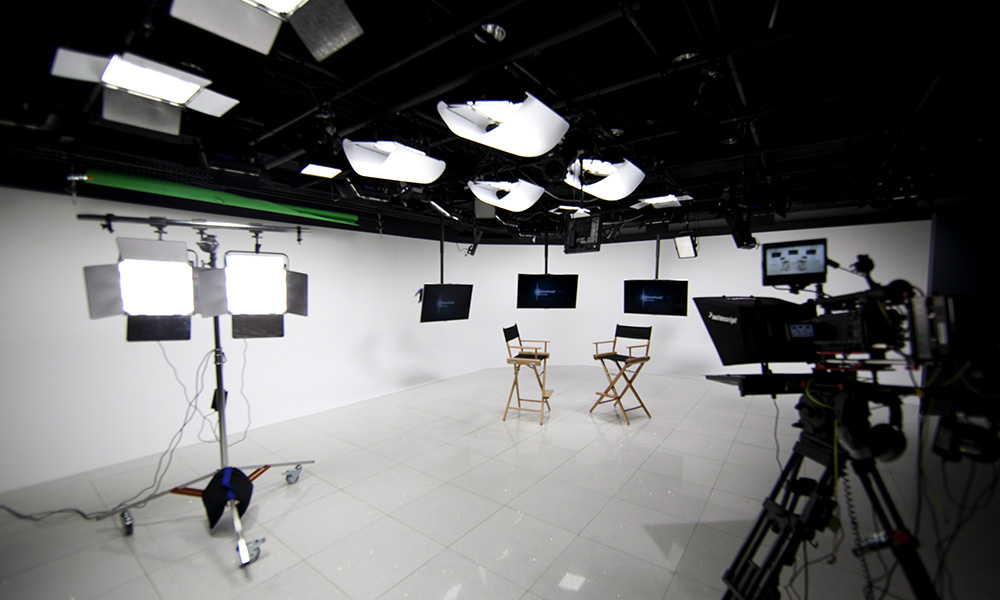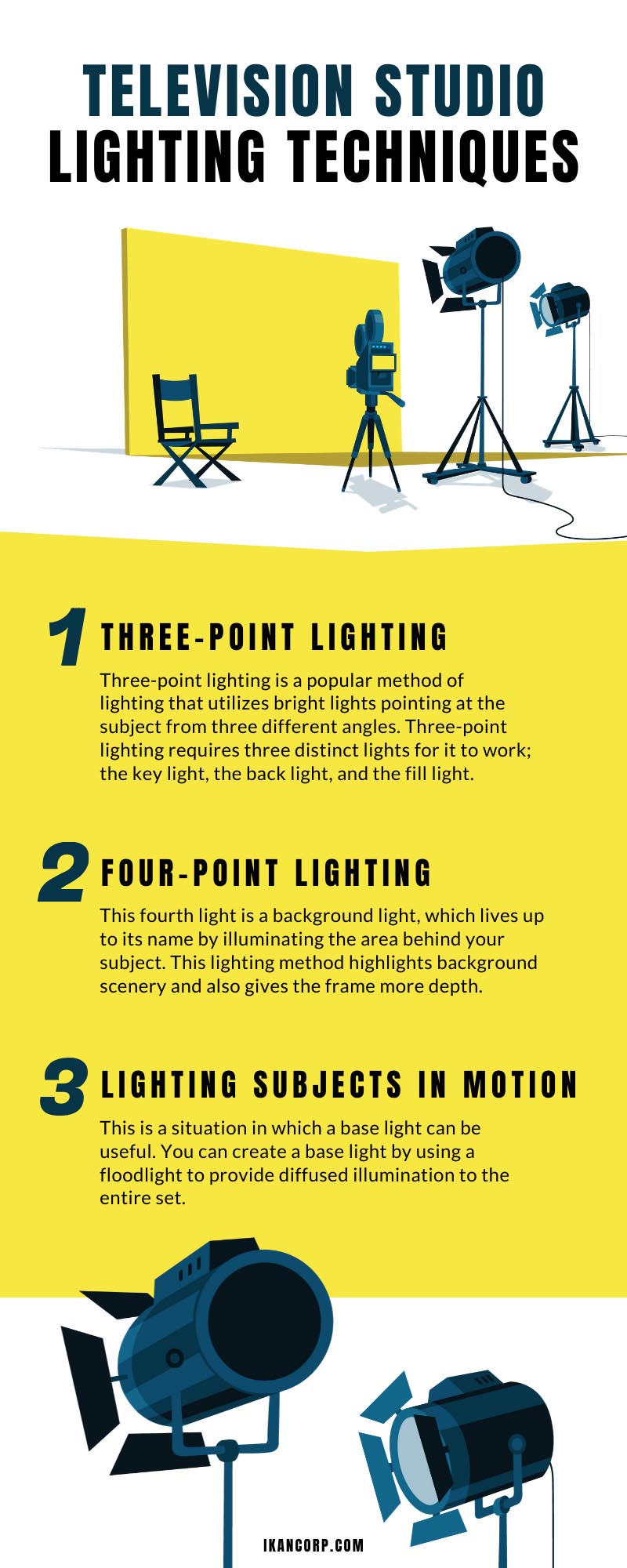
Just like audio and video, in-frame lighting is essential to any television production. There are various facets to any video production, all of which are vital to ensuring smooth project operations. However, TV studio lighting is one of the top priorities when it comes to enhancing the quality of your visual presentation. For instance, TV Broadcasts can’t look overly lit or too dark when the viewer tunes in.
You need to find the right angles to make you and your production look as visually appealing as possible. With the help of these studio lighting techniques, you can make sure your production has the best light during a broadcast.
Three-Point Lighting
Three-point lighting is a popular method of TV studio lighting that utilizes bright lights pointing at the subject from three different angles. By taking advantage of these three angles, you can make your subject look more visually appealing. You can achieve this level of visual quality easily by using the lighting to take control of shadows being cast on set, thus maximizing depth and detail within the frame. Three-point lighting requires three distinct lights for it to work: the key light, the back light, and the fill light.
This method will help you achieve a picture for your viewers that is devoid of any flat or muddy imagery. With three-point lighting, you can make sure your audience is looking where you want them to, with your desired visual quality.
Key Light
The key light is usually the main source of light on set. Key lights shine directly onto the subject head-on, or slightly to the side, to create an illuminated shape that will aid in producing shadows. Key lights for three-point lighting need to be set in a way where shadows are cast across the subject from the angle opposite of the key light. This gives you creative control over the TV studio lighting aesthetic of the entire image.
Back Light
As the name suggests, the back light is found behind the subject in-frame to establish a strong outline around them, while also enhancing the shadows they cast. This will give you shot depth, which is an important factor of three-point lighting. To achieve this, your back light must have the same intensity of brightness as your key light. When angling your lights, a good rule of thumb is to always position lights 45 degrees from both the camera and the subject. This studio lighting technique will help you achieve the best lighting quality to support your image detail and depth.
Fill Light
For your fill light to properly do its job, the level of brightness it emits should be about half the brightness of the other two lights. Fill lights are soft lights which are not meant to produce any harsh shadows like the key and back lights. The point of having a filling light is to illuminate the darker areas in the frame by filling it with light, hence the catchy name.
This effect will help balance the contrast in the image to produce a more detailed shot of the subject. Making sure your image has good detail and depth throughout the whole broadcast is a pivotal aspect of achieving good three-point lighting is, and fill lights are certainly integral in ensuring these qualities.
Four-Point Lighting
There is another form of studio lighting technique, four-point lighting, which provides an additional source of light for the image. This fourth light is a background light, which lives up to its name by illuminating the area behind your subject. This lighting method highlights background scenery and gives the frame more depth. Whereas the lights in three-point lighting have necessary brightness levels to match, the level of brightness you use in four-point lighting will depend on the specific subject in the frame.
Additionally, if objects in your foreground are casting unwanted shadows on your subject, using four-point lighting can eliminate that. For instance, you may run into such an issue with the lighting equipment itself. In some cases, broadcast studio lighting equipment itself can cast shadows on the subject, which can be an annoying distraction to your audience. With the help of a background light, you can maintain a quality detailed image throughout the duration of your shoot.
Lighting Subjects in Motion
If you use either of these studio lighting techniques to light a subject who will be moving across the set during a broadcast, you will need to make some adjustments. If you know exactly where your subject will be moving on the set, you can prepare your lights so that they layer over each other to prevent light dropping from the subject mid-movement. By properly layering the lights, you can keep your subject brightly and consistently lit in front of an audience.
In some cases, your subject might be moving in a random manner. This is a situation in which a base light can be useful. You can create a base light by using a floodlight to provide diffused illumination to the entire set. While this can provide lighter, it can also unfortunately ruin your video quality. In some cases, this studio lighting technique can result in a loss of depth to the shot, so it is not the ideal way to go about lighting your subject. At the end of the day, you should always try the first method of lighting subjects in motion instead of the second option. Once you become more familiar with your lights on set, figuring out creative solutions to common problems will become secondhand nature.
Now that you are more familiar with these helpful television studio lighting techniques, it’s time to put them into action on your set. If your production is overly lit or too dark, it can ruin the whole broadcast. However, if you stick to these lighting techniques, your production will look pleasing and professional. When broadcasting to your audience, holding their attention is vital. If your audience can’t see you in-frame, they’ll disconnect from what you’re trying to say in the first place. At Ikan, we can supply you with a variety of professional broadcast studio lighting equipment so you can enhance your production as soon and as effectively as possible.

